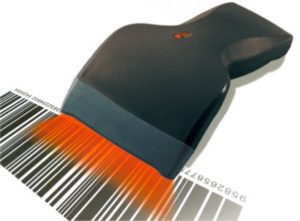“Keep an eye on inventory!” This is sound business advice that needs to be emphasized over and again.
There should be enough inventory to keep sales flowing, but not too much that it leads to cash-flow problems.
Inventory usually refers to finished or ready-to- sell products — as well as to the raw materials, parts and supplies required to produce these. Inventory also includes products in process (fabricated parts and sub-assemblies), tools used to keep production facilities in tip-top shape, office supplies and equipment, and packaging materials.
Too much inventory generates costs, rather than profit, for the store: cost of storage, cost of handling, cost of updating records, insurance costs. Besides, these idle products and materials in stock run the risk of shrinkage, fading, breakage, deterioration, and depreciation. It is easy to see why excess inventory is referred to as money “tied down.”
At the other extreme, too low inventory level poses the problem of production running out of the required inputs, thus disrupting production. Among retailing companies, sales is bound to suffer if customers keep finding you do not have the merchandise they went to your store for.
Inventory control for start-ups in the retailing business is quite simple, compared with inventory control in a manufacturing outfit.
According to smallbusiness.chron.com, you must begin your inventory system by counting how much of your stock and ancillary supplies you have on hand.
Then review your sales records to determine a reasonable expectation of future sales.
Next, analyze your inventory counts to ensure you can serve the sales you expect.
You then need to track your sales so you know how your inventory is dwindling and when you need to reorder. The simplest way to do this is at the point of sale, by using your cash registers to track what is being sold. At the end of each day, the registers will be able to tell you exactly how many items were sold.
This method works better if you are using the point-of-sales (POS) bar code scanners. The bar codes are the patterns of lines, spaces and numerals printed on a piece of merchandise. When these codes are scanned, the data is relayed to a computer. Once transmitted, the inventory file is updated and the corresponding sale is automatically recorded.
In reordering, be sure to place your orders so the new stock arrives before you run out. Ordering too early depletes your cash and ties it in inventory value. Your bottom line will be healthier if your excess inventory is just enough to handle sales fluctuations, but no larger than that.
(Note: For those who are curious about what bar codes stand for, here’s useful info from howstuffworks:
The manufacturer identification number is the first six digits of the UPC (universal product code) number . The next five digits — are the item number. A person employed by the manufacturer, called the UPC coordinator, is responsible for assigning item numbers to products, making sure the same code is not used on more than one product, retiring codes as products are removed from the product line, etc.
In general, every item the manufacturer sells, as well as every size package and every repackaging of the item, needs a different item code. So a 12-ounce can of Coke needs a different item number than a 16-ounce bottle of Coke, as does a 6-pack of 12-ounce cans, a 12-pack, a 24-can case, and so on. It is the job of the UPC coordinator to keep all of these numbers straight!
The last digit of the UPC code is called a check digit. This digit lets the scanner determine if it scanned the number correctly or not.)
Photo: from http://www.barcodeman.com/altek/simple/

